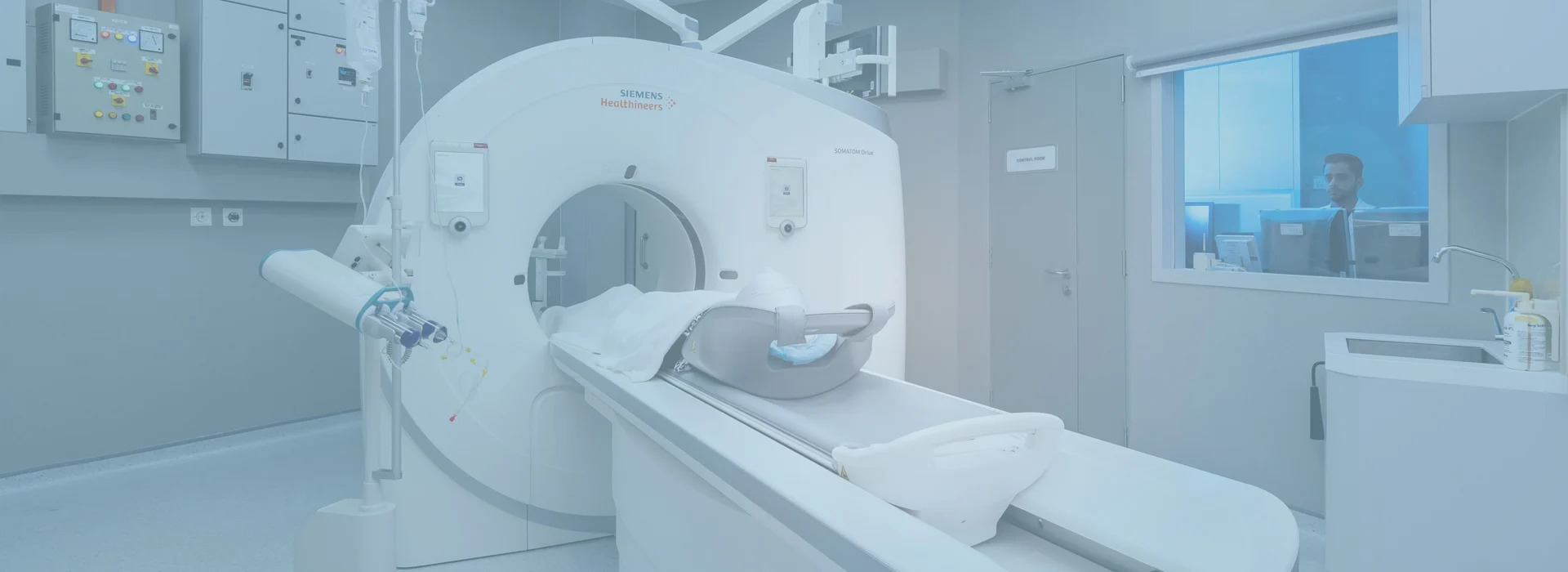
09 Oct Vaginitis: What Should I Know?
Vaginitis: What Should I Know?
By Island Hospital | Sep 23, 2025 10:34:08 AM
Vaginal health is an important part of a woman’s overall well being. Vaginal problems can affect your fertility, desire for sex, and ability to reach orgasm. Ongoing vaginal health issues can also cause stress or relationship problems and impact your self-confidence.
The vagina has its own chemical balance, which can be easily disturbed. If the lining of the vagina becomes inflamed, a condition known as vaginitis may develop. Vaginitis causes swelling, itching, or burning in the vagina, and is often combined with an unusual smell or discharge.
Vaginitis is typically caused by a change in the balance of normal bacteria flora that lives in a woman’s vagina, by an infection, or by a reaction to chemicals or scents. As many as one third of women will have symptoms of vaginitis sometime during their lives. Vaginitis affects women of all ages but is most common during the reproductive years.
In this article, we’ll dive deeper into all you need to know about vaginitis – causes, how it’s transmitted, symptoms, treatment, and prevention.
What Can Cause Vaginitis?
A woman’s vagina normally produces a small amount of clear or cloudy white fluid every day, known as discharge, that passes from the body. This discharge keeps the tissue moist and healthy.
It is normal for the amount and colour of the vaginal discharge to change throughout the menstrual cycle.
A change in the balance of the yeast and bacteria that normally live in the vagina can result in vaginitis. This causes the lining of the vagina to become inflamed.
Factors that can change the normal balance of the vagina include the following:
- Antibiotics
Destroys protective bacteria in the vagina. These bacteria normally stop the candidal organisms from overgrowing. Yeast infection may occur after taking a course of antibiotics for another condition such as sore throat.
- Changes in hormone levels
These changes are due to pregnancy, breastfeeding, or menopause.
- Douching
Refers to rinsing or cleaning out the vagina by squirting water or other solutions (such as vinegar, baking soda, or douching solutions you can buy at drug and grocery stores) into the vagina.
The water or solutions are held in a bottle and squirted into the vagina through tubing and a nozzle. Douching changes the delicate balance in the vagina, which can make you more likely to develop a vaginal infection.
- Perfumed women hygiene products
This includes scented panty liners, soaps, and other perfumed products.
- Spermicides
These are creams, gels, foams that inactivate sperm.
- Birth control pills
Changes in the vaginal environment occur with increased hormonal levels from oestrogen-containing birth control pills. This change creates an environment for the fungus to grow and cause symptoms.
- Infections
These infections are due to scratches in the vagina during insertion of a tampon or other objects.
Types of Vaginitis
There are different types of vaginitis. The most common are yeast infection, Bacterial Vaginosis (BV), and trichomoniasis.
Their causes are quite different, but their signs and symptoms may be similar, and treatments of the three conditions vary.
1. Bacterial Vaginosis (BV)
Bacterial Vaginosis (BV) where the normal balance of bacteria in the vagina is disrupted and replaced by an overgrowth or imbalance of the bacteria that occur naturally in the vagina.
Women who have never had sexual intercourse are rarely affected.
BV is associated with pelvic inflammatory disease (PID), which can cause infertility and tubal (ectopic) pregnancy. BV also can cause problems with pregnancy such as premature delivery and low-birth-weight infants.
2. Yeast Infection
Yeast infection also is known as candidiasis. It is one of the most common types of vaginal infection. A majority of adult women have had at least one genital yeast infection in their lifetime.
Yeast infection can spread to other parts of the body including skin, mucous membranes, heart valves, oesophagus, and other areas. Infections tend to happen when an imbalance occurs.
In rare circumstances, it can cause life-threatening systemic infections mostly in people with weakened immune defenses (such as women who are pregnant and people who are HIV positive, have diabetes, or are on long term steroids).
3. Trichomoniasis
Trichomoniasis is a type of vaginal infection caused by the parasite “Trichomonas vaginalis” that is usually transmitted through sex. Trichomoniasis is primarily an infection of the urinary and genital tract.
It is important for sex partners to be treated so it is not passed back and forth. Trichomoniasis is associated with increased risk of transmission of HIV.
Note:
Studies have shown that at least 40 percent of the time, women misdiagnose the type of vaginitis they are experiencing. Therefore, it is important to see a doctor for diagnosis and its appropriate treatment.
How is it Transmitted?
A healthy vagina has a balance of many different kinds of bacteria:
“Good” bacteria helps keep the vagina a little bit acidic. This keeps “bad” bacteria from growing too fast. A healthy vagina makes a mucus-like discharge that may look clear or a little milky, depending on the time of a woman’s monthly cycle.
When the balance between the “good” bacteria and the “bad” bacteria is upset, “bad” bacteria grow too fast and cause infections. Discharge may have a funny colour or a bad smell.
Sometimes these “bad” bacteria and other germs that cause vaginitis can spread through sex.
Other things can upset the balance of the vagina too, like:
- Antibiotics (medicines)
- Douching
- Tight pants
- Damp underwear
- Poor diet
- Vaginal products (sprays, lubricants, birth control devices)
- Pregnancy
Is Vaginitis Always Spread Through STDs/STIs?
Vaginitis is not always caused by a sexually transmitted infection. Women who are not sexually active may develop BV or yeast infections.
Most of the time these infections are caused by an upset in the balance of bacteria that is found commonly in the vagina. Trichomoniasis on the other hand is sexually transmitted.
How Do I Know If I Have Vaginitis?
Each type has a different cause and may present different symptoms, and more than one type of vaginitis may be present at one time (with or without symptoms). Several common symptoms of vaginitis include:
Symptoms of Bacterial Vaginosis (BV)
BV is caused by the excess growth of bacteria in the vagina. The symptoms are:
- Abnormal vaginal discharge with an unpleasant odour. Some women report a strong fishy smell, especially after intercourse.
- Pastry vaginal discharge that may appear white or gray and it can be thin.
- Burning during urination.
- Itching around the outside of the vagina.
Many women may be asymptomatic, or have very mild symptoms that go unnoticed. The symptoms of bacterial vaginosis may resemble other conditions. Always consult your Gynaecologist for a diagnosis.
Symptoms of Yeast infections
Yeast infections are caused by the excess growth of yeast in the vagina. The symptoms are:
- Thick, whitish-gray “cottage cheese” type of vaginal discharge
- Abnormal discharge, itching, irritation and redness of vulva.
- Possible burning upon urination due to urine passing over inflamed vulva.
- Discomfort and inconvenience may vary considerably.
- Other STIs such as HSV, chlamydia, and gonorrhea may cause similar symptoms (such as vaginal discharge).
Symptoms of Trichomoniasis
Trichomaniasis is a sexually transmitted infection caused by a protozoan. The symptoms are:
- Frothy, often musty-smelling vaginal discharge that may be yellow-green or gray.
- Itching and irritation around the vagina and vulva.
- Burning with urination (sometimes confused with a urinary tract infection).
- Discomfort during intercourse.
How is Vaginitis Diagnosed?
First, our doctors will assess the pH and consistency of your vaginal discharge. Urine tests and samples of any discharge will likely be done.
Pelvic Examination
During pelvic examination, your vagina and cervix will be inspected for any discharge or lesions.
The size and location of the uterus and cervix will be determined, and assessed if you have pain or tenderness on movement of the cervix and uterus, or in the areas next to the uterus, which correspond to the Fallopian tubes and ovaries.
Vaginal Examination
During a vaginal examination, a speculum is introduced into the vagina to see the cervix. Swabs will be taken of any discharge to determine if the infection is fungal (yeast), protozoan (trichomoniasis), or bacterial (bacterial vaginosis).
A sample of your vaginal discharge will be examined under a microscope to detect the presence of the organisms associated with vaginal infections.
Pap Smear
In some cases, a Pap test will be performed to exclude the possibility of cervical cancer.
At Island Hospital, we used the BD SurePath liquid-based pap test, with results ready within 24 hours.
From mammograms to urinalysis, discover other essential health screening tests for women that will help you detect and address potential health issues early.
Blood Tests
Certain blood tests can detect antibodies to the yeast-infection.
Note: If Trichomonas is present, and confirmed by laboratory tests, more tests will be carried out to determine other sexually transmitted diseases (STDs).
What Should I Do If I’ve Been Diagnosed With Vaginitis?
If you are diagnosed with vaginitis:
- Keep your genital area clean and dry.
- Don’t douche or use feminine hygiene sprays or powders while being treated.
- Don’t have sexual relations while being treated*.
*Note: After the visit with your gynaecologist, abstain from sexual intercourse until treatment is completed and symptoms subside.
How is Vaginitis Treated?
Diagnosis is usually made based on your symptoms and results of urine tests and, occasionally, vaginal cultures (samples sent to the lab). Treatment is based on the organism causing the infection.
Depending on the cause of the infection, you may be prescribed:
- vaginal suppositories,
- antifungal pills, or
- antibiotics (as pills or an injection).
Treatment varies depending on:
- which form of vaginitis you have,
- the severity of infection,
- duration of infection,
- recurrence of infection, and
- whether you are pregnant or not.
Some of the infections will not go away with home care or over-the-counter medications. However, some conditions may require antibiotics.
You must see your gynaecologists for diagnosis and treatment.
Treatment depends on the type of vaginitis. Treatment strategies include:
1. Treatment For Bacterial Vaginosis
Prescription antibiotics or vaginal gels/creams.
2. Treatment For Yeast infections
Antifungal cream or suppository inserted into the vagina, or oral antifungal medication.
While over-the-counter treatments are more convenient and less costly than to the doctor’s visit, it’s best to see a healthcare professional the leading time you have symptoms to ensure proper diagnosis and treatment.
3. Treatment For Trichomoniasis
Prescription antibiotics are needed for the patient and her sexual partner. If you are diagnosed, you must avoid sexual contact until treatment is completed.
How Can I Reduce My Risk?
There are a number of steps you can take to reduce the risk of getting vaginitis, including:
- Wash your vaginal area externally every day. Use mild soap. Rinse well and pat dry.
- Wipe your vagina and anus from front to back.
- Don’t douche, this can upset the natural balance of the vagina.
- Take antibiotics only when needed. Antibiotics can kill “good” bacteria.
- Limit the number of your sex partners. Always use condoms when having sexual intercourse.
- Wear cotton or cotton-lined underpants.
- Don’t wear tight pants and don’t wear pantyhose in hot weather.
- See your healthcare provider if you have any unusual discharge or smell.
Book an Appointment With Your Gynecologist Today
Many women often mistakenly think they have a “yeast infection” and treat themselves when, in fact, they have a similar vaginal infection that will not respond to self-treatment with over-the-counter yeast medications.
The important thing is not to guess, but to recognise the symptoms if you develop a vaginal infection. Vaginitis is rarely dangerous. In most women, it is easy to treat.
But if you are pregnant, an infection may cause problems to you and your baby. Stop suffering!
While not all vaginal problems can be prevented, regular checkups can help ensure that problems affecting your vagina are diagnosed as soon as possible.
Don’t let embarrassment prevent you from talking to your Gynaecologist about any concerns you might have about your vaginal health.
At Island Hospital, our gynecologists are ready to help you every step of the way. We provide comprehensive care for women of all ages.
We’re proud to be recognised both locally and globally, including:
- A finalist for Malaysia’s Flagship Medical Tourism Hospital Programme
- A place on Newsweek’s lists of World’s Best Hospitals 2025
Make an appointment today for precise testing and to get the most appropriate and effective treatment right away.
Take Proactive Action Today – Get a Comprehensive Health Screening

We’re offering our Comprehensive Plus Package (Female) at only RM2,799 – giving you a complete head-to-toe health assessment for peace of mind.
Our package includes vital health screenings, such as Gynaecological Assessment, Radiological Screening, Cardiovascular Assessment, Urine Assessments, and more.
What’s Included in Your Screening Experience:
✔ Physical examination
✔ Complete medical report
✔ Consultation by Health Screening Physician/Specialist
✔ Choice of light refreshments
✔ Exclusive Island Hospital woven bag







